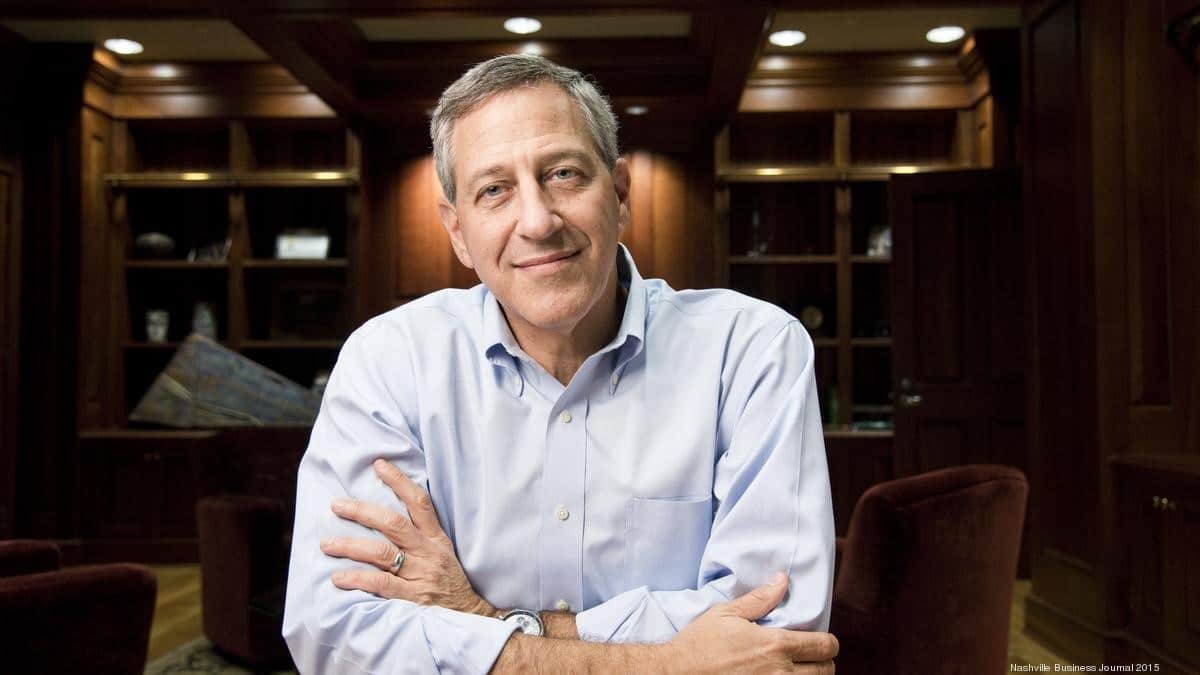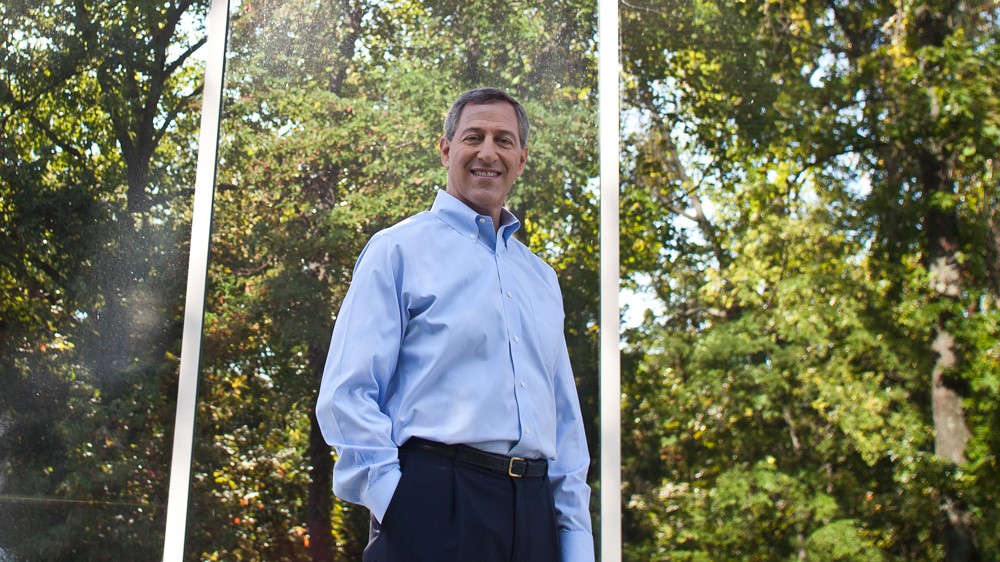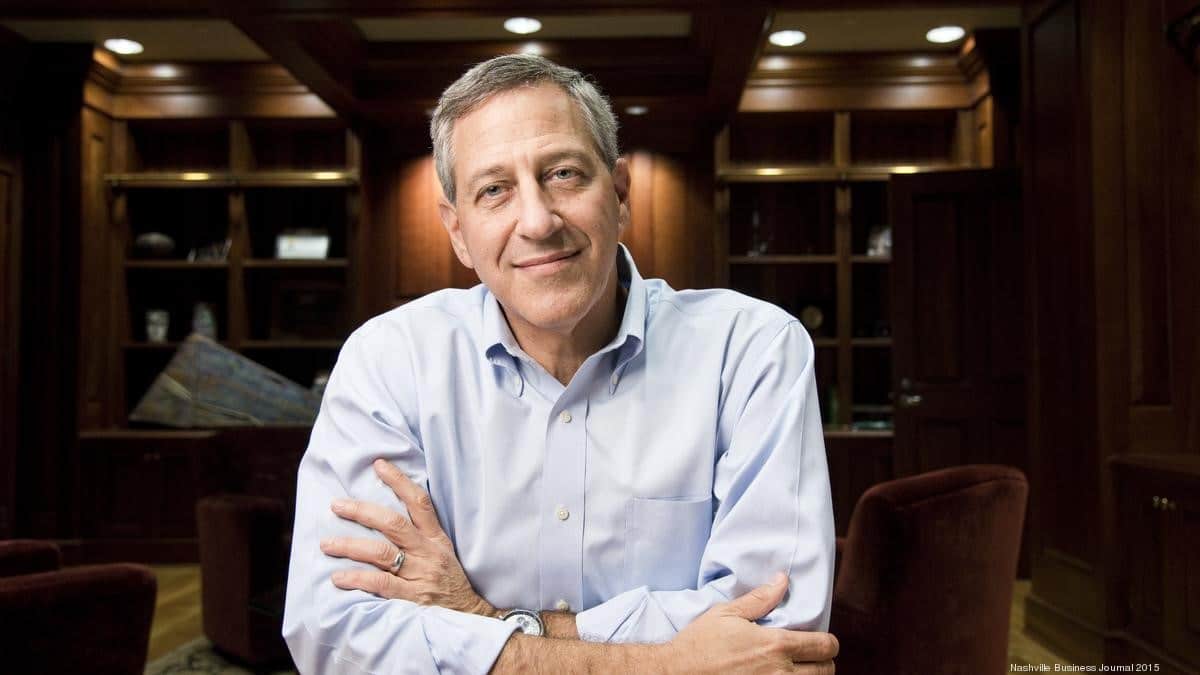Note: The views expressed in this blog are solely those of Gary Garfield.
During my summer internship at InfoWorks, Gary Garfield—former CEO of Bridgestone Americas was kind enough to sit down with Tony Heard—Partner at InfoWorks, and me for an interview. In this interview, Gary shares how he became CEO, his overhaul of Bridgestone’s strategy and culture, his use of analytics in data-driven decision making, and his experience with management consultants.
Gary is not your typical CEO, soft-spoken, humble, and open to discussion; a former attorney, he also does not have your typical CEO resume. He began his career at Bridgestone in 1991, in product liability. Eventually, he became the General Counsel of Bridgestone Americas and worked closely with the executives and the board in both the U.S. and Japan.

Gary Garfield on: Becoming CEO
Moshe Cole (MC): Can you give a brief overview of how you became CEO of Bridgestone Americas?
Gary Garfield (GG): In September of 2009, I gave a presentation on corporate governance to the parent company in Tokyo; We’re a Japanese-owned company. The then-CEO wanted to understand how US companies and European companies approached the whole issue of governance as compared to Japanese companies. And he asked me to give a presentation to the board. The subject was something I wouldn’t call myself an expert in. But, apparently, he liked it and after it was over he called me to his office and he asked if I would be the CEO. I wasn’t sure I was ready. I wasn’t expecting it and hadn’t been preparing myself for it. But I did say yes.
Gary Garfield on: Strategy
MC: Can you speak to some of the issues that you saw [at Bridgestone]?
GG: We were extremely top-down oriented.
Tony Heard (TH): Typical for a Japanese corporation?
GG: Yes, it is. I think it is typical of a Japanese corporation. But I don’t believe that is solely the root of it.
Just by way of example, the very first question I was asked when I became CEO was what wine we should serve in the Titans suite for the upcoming football game. That’s the level of top down. And that sort of set the example for the organization.
We were incredibly tactically oriented. Every year, we did a rolling five-year strategic plan. We were required to do that by Japan. And conceptually it’s a good thing to do. The way we did it, I would say, was not very productive. This was partly because we didn’t know any other way, partly because the Japanese are extremely tactical and not very strategic.
Secondly, we were incredibly customer orientated. And it was killing us. You take almost anything to an extreme and it can be bad. We would give the customers whatever they wanted. And that meant giving the car companies whatever tire they wanted, at a price where we lost money. And the tire the car companies wanted wasn’t necessarily what the end user wanted. Consumers would buy a car, drive it for a year and a half, the tire would wear out, and they would think it was a lousy tire because it only lasted 20,000 miles, it didn’t last 50,000 miles. And the car companies didn’t care about that at all. They wanted a specific kind of cornering, braking, ride, when you drove off the lot. And so, we would sell those tires at a loss and then the consumer would say, when it came time to replace the tires, I don’t want another Bridgestone, they are lousy tires. And yet, our whole business model was to sell at a loss to get the replacement sale, which we weren’t getting with the regularity we should have because we weren’t putting tires on the car that the consumer wanted. So, that had to change.

Gary Garfield on: Culture
MC: What was your plan to turn some of those cultural things around?
GG: There were different pieces of the plan, but culture was my biggest focus. In my opinion, the CEO owns the culture. The CEO also owns the future of the company. It’s the role of the CEO to look further out into the future than anybody else. And that’s why it’s so important for the CEO not to be making decisions on what wine gets served at an event. That’s not where your vision should be, that’s not what you should be looking at. You should be looking five, ten years down the road. What do we need to do to position ourselves for that?
I worked very hard on the culture. I tried very hard to get the people around me to speak up. There was no real discussion and debate. I knew over time I could get people to challenge me. I just had to keep inviting it and rewarding it, or at least not punishing it, when it happened. The tougher issue that I wanted [to solve] was when I was in a meeting, if I could get someone from one part of the business to challenge someone in a different part of the business in front of me, then I knew I had achieved something. That’s much harder.
But getting a broader cultural change, breaking down the silos, driving innovation, getting people to speak up throughout the organization is much more difficult than my little sphere of direct daily influence.
So, we used innovation as the cultural change lever. We had an offsite meeting of about the top 150 people in the company. Really, the first time this was ever done in a meaningful way. And I made the case that we had to become innovative.
I called an outside expert on innovation. He had written some books on innovation, a former professor at the Harvard Business School. He explained how the most innovative companies in the world really operate. What is their culture, what is their innovation process, what are their processes, what is the focus of the organization? One of the things that he explained was that the focus of the most innovative organizations was on the spoken and unspoken wants and needs of the end user.
He spoke for six hours and answered everyone’s questions. And I asked the group, “Do you think our culture will allow us to do what was just described to you?” Everybody resoundingly said, “No way, not gonna happen!” And I said, “I agree with you. So, your job tomorrow is to come back here and with the help of these facilitators, you will define what our culture needs to be for us to be innovative.” And they did, and it became known as, the “Rules of the Road.”
I could then say to the organization these are your cultural blueprints, they’re not mine. I didn’t make them. I didn’t write them. You did.
And we incorporated them into our performance review system. A big part of the performance review system was if you were living by the rules of the road. We set up mechanisms that we improved over time to measure that.
Gary Garfield on: Data Driven Decisions and Analytics
TH: Did you see an evolution of data driving decisions, over the position- “I’ve been with the company 20 years and I know what we need to do?”
GG: Absolutely. The sort of experience-driven decision-making process, to the extent it’s a process, that was how we operated. We worked hard to change that to data driven decisions. It’s amazing what you come up with when you do.
There’s so many examples I can give you. We hired a consultant from a small outfit out of Chicago. She created a process to measure whether our tires and our competitor’s tires were meeting the wants and needs of the consumer. For a number of reasons, that is actually a pretty complicated question. But we just kept plugging away at it, and over time we acquired a lot of data that really helped us understand what end users really wanted in their tires, and we could measure if we were successful in meeting their wants and needs. So, by way of example, one tire that we came out with, after two-years of service, we realized it was falling short in one area sufficiently, so we decided to make changes in the tire.

Gary Garfield on: Management Consultants
MC: You mentioned a couple of times now bringing in some consultants to help with facilitation and data modeling. When did you make that decision to bring in consultants? And why did you make that decision?
GG: In our model at Bridgestone America and in Japan, we didn’t use consultants. So I didn’t really know what consultants could bring to the table. The person who was my COO had been a consultant in a prior life. At his suggestion, we brought in a group from New York to help us on the cultural changes. The experience was very positive. We were a very insular organization so this experience was very informative, and it began to open my eyes. So, over time, we brought in consultants on a number of different issues.
We brought in the Boston Consulting Group to help us develop a true five-year strategic plan because we really didn’t know how to do it as I explained earlier. And we brought in a few other consultants on different issues. Some might argue that we used too many consultants. They may be right, they may be wrong. I would argue given our insular culture and level of maturity, we did what we needed to do.
MC: Were there any instances where bringing in an outside perspective was perhaps, non-productive?
GG: Sure, not every consultant does a great job. Sometimes it’s a capability issue, sometimes it can be an agenda issue, it can be a cultural issue. So yeah not every consultant works.
One of the things we did to help drive the cultural change was for the top, I want to say 30 or so executives in the company, if they wanted an executive coach we would provide one. And one of my big disappointments was the executive coaching process for many people, not all, but many, was not as productive as I would have hoped.
MC: Do you have any final thoughts on the value proposition of bringing in outside perspectives to a company or organization?
GG: I think first of all, there is potentially high value in it. But different companies are at different levels of maturity at different points in time. And they have different wants and needs. So, figuring out what value a consultant can provide on what issue, and who can provide that value, is part of the challenge. In other words, to be honest with you, if I wasn’t open to the cultural change but someone below me was trying to drive it, it never would have worked. And I don’t care what consultant we would have brought in. If the CEO doesn’t buy it, the organization isn’t going to adopt it. It will not happen, in my opinion.
Conversely there were times when I said, “I want to bring in a consultant on such and such an issue.” And there were people in the organization who were in very important roles, who wouldn’t buy into what the consultant was trying to do. They acted as blockers.
So, it depends on the issue, it depends on the consultant, and it depends on if the organization is open to it. And if the organization isn’t open to it, then somehow, someway or the other, if this is what the CEO wants, they’ve got to get the organization open to it, either by cajoling them, persuading them, or by making changes.
Tweet us @InfoWorksTN to join the conversation!




